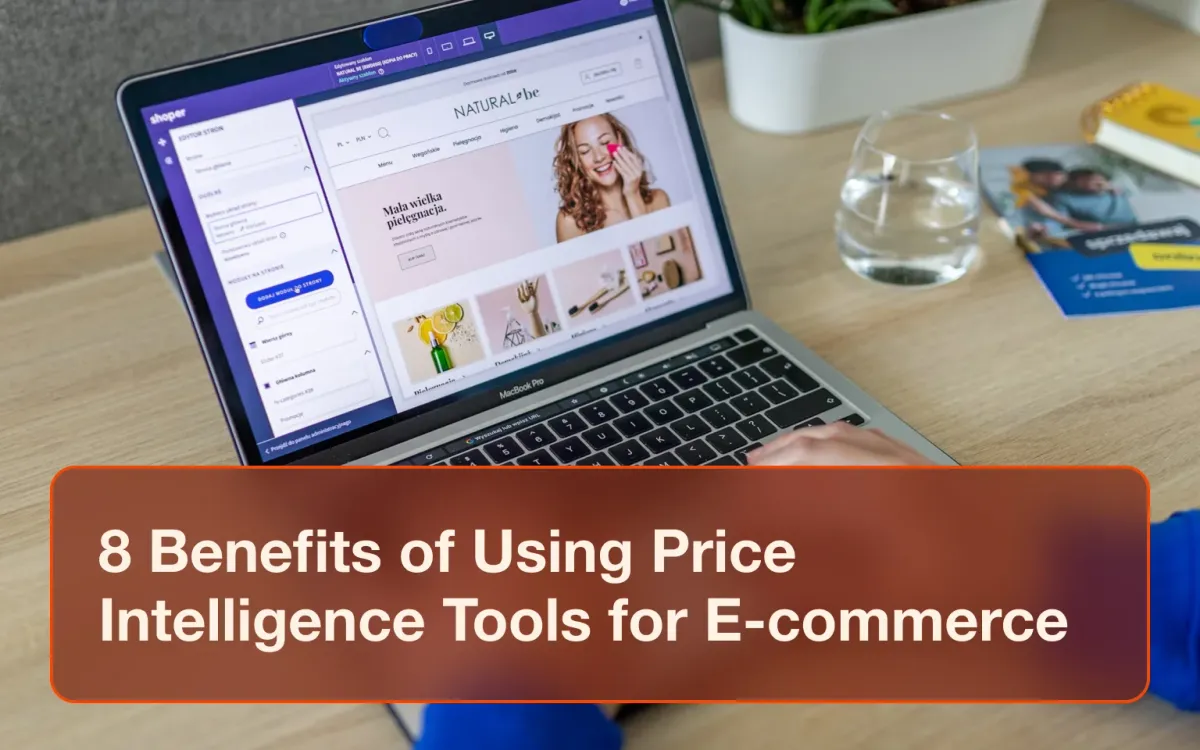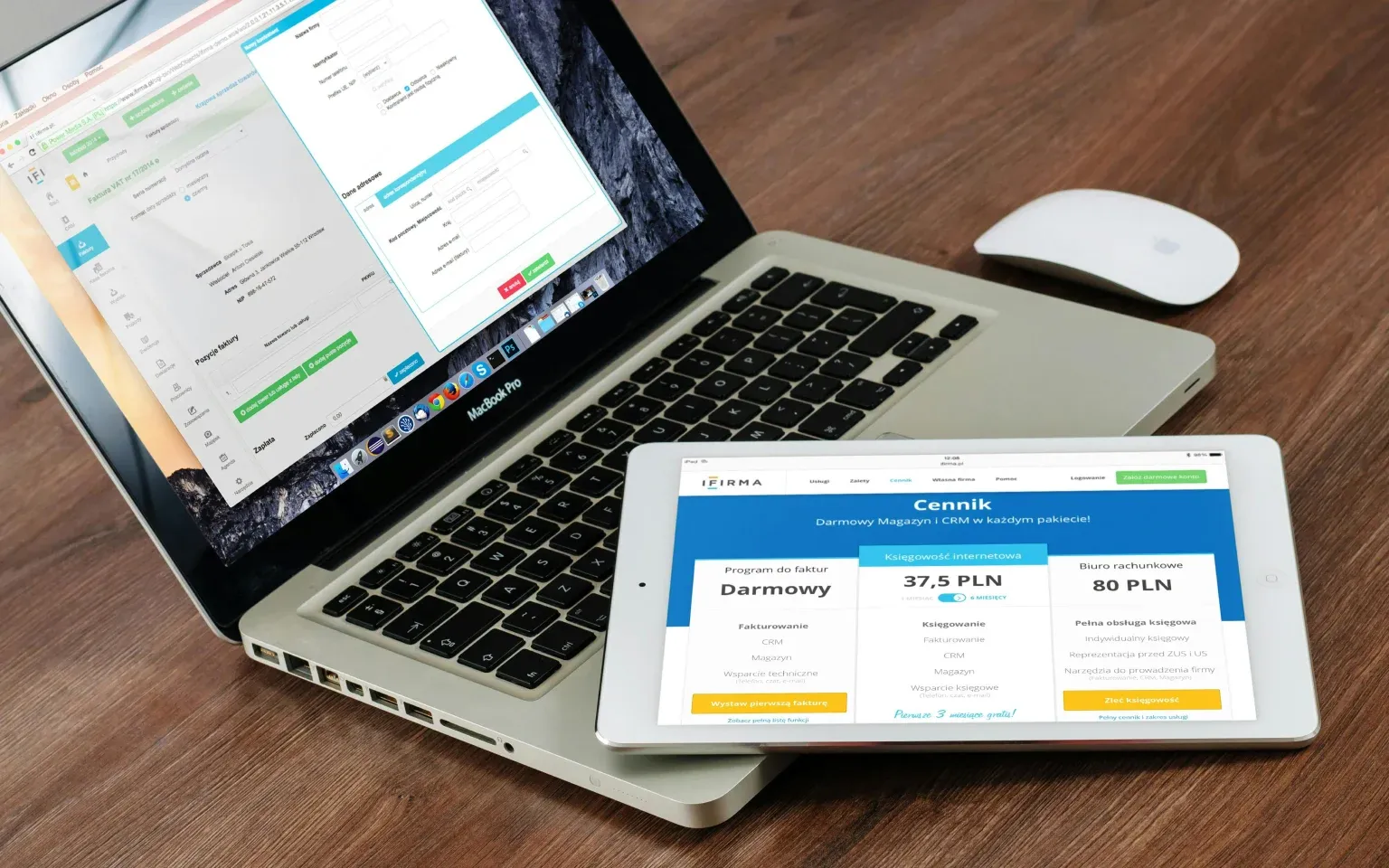8 Benefits of Using Price Intelligence Tools for E-commerce
Unlock the power of price intelligence software for e-commerce retailers. Gain a competitive advantage by analyzing competitor prices. Request a demo today!

Why is getting your pricing right so important in e-commerce?
In the fast-paced world of e-commerce brands and retailers, competitive pricing can make or break a business.
Imagine you're shopping online for a new pair of shoes. You find the perfect pair on two different websites, but one is $10 cheaper than the other. Which one would you choose? Most likely, the cheaper option. This simple decision-making process is why competitive pricing and market price positioning are so important.
To stay ahead of your competitors' profitability, e-commerce businesses need to monitor and adjust their price movements constantly. This is where price data-driven intelligence system come into play.
A data-driven pricing intelligence software helps businesses track competitor prices, analyze market trends, and adjust their pricing strategies in real time. By using these competitive price intelligence tools, businesses can ensure they are offering the best prices, track online prices attracting more customers, and ultimately boosting their sales and profits.
In this article, we'll explore the eight key benefits of price intelligence software gives for e-commerce.
We'll cover how accurate pricing data helps in efficient inventory management and the importance of price market intelligence, high-quality data promotional activities. Furthermore, we'll examine how competitive pricing directly correlates with increased sales.
Definition of Price Intelligence Tools

Price intelligence tools are software solutions that help businesses monitor and analyze the prices of their competitors.
A price intelligence tools collect data from various ecommerce sources on your competitor websites to show how much other companies are charging for similar products.
By using this informed pricing information, businesses can adjust their own prices to stay competitive, attract more customers, and increase visibility sales.
In simple terms, price intelligence tools help businesses make smart pricing decisions and price changes based on real-time market data.
What is Retail Pricing Intelligence?

Retail pricing intelligence is the process of gathering and analyzing data about prices in the retail market. This includes looking at how much competitors are charging for similar products, understanding market trends, and keeping track of customer demand.
By using this pricing analytics information, retailers can set their prices to be competitive, attract more customers, and increase their sales and profits.
What is Competitive Price Intelligence?
Competitive price intelligence is the process of collecting and analyzing information about your competitors' prices. This AI-driven map monitoring means keeping track of how much other businesses are charging for similar products or services.
By knowing what your competitors are doing, you can adjust your own prices to stay competitive, attract more customers, and boost your sales and profits.
8 Benefits of a Price Intelligence Tool

"Using a price intelligence tool can significantly boost your business by helping you stay competitive, increase profits, improve customer satisfaction, better position yourself in the market, manage inventory more efficiently, make data-driven decisions, boost sales, and reduce manual effort through automation. These tools give you the insights you need to make smarter pricing decisions and stay ahead of your competitors." - David McGuckin, Software Developer at Opinly AI
1. Competitive Pricing Strategy
Imagine you're running an online store selling electronics. One of the biggest challenges is making sure your prices are attractive compared to your competitors. If your prices are too high, customers will go elsewhere. If they're too low, you might lose out on profits.
This is where price intelligence tools come in handy. A price intelligence tool constantly scan and crawl the internet to see how much your competitors are charging for similar products. They gather this data and present it to you in an easy-to-understand format in a customizable dashboard.
With this information, you can adjust your precise pricing to stay competitive with a winning pricing strategy. For example, if a competitor drops their price on a popular item, you can quickly respond by lowering your price too. This helps you attract more customers and keep your sales strong.
Example:
Let's look at some numbers to see how effective competitive pricing can be. A study by a leading e-commerce research firm found that businesses using price intelligence tools saw a 15% increase in sales compared to those that didn't. Another survey showed that 70% of customers said they would choose a store with lower prices over one with higher prices, even if the difference was just a few dollars.
Additionally, businesses that adjusted their prices regularly based on competitor data reported a 10% increase in profit margins. This is because they could avoid underpricing and losing money, as well as overpricing and losing customers.
By using price intelligence tools, you can make sure your prices are always competitive, helping you attract more customers and boost your sales and profits.
2. Improved Profit Margins
Maximizing profits is a top priority for any e-commerce business. One effective way to do this is through dynamic pricing. Dynamic pricing means adjusting your prices based on current market conditions, demand, and competitor pricing. Price intelligence tools make this process much easier.
A price intelligence tool analyze analytical capabilities of data to determine the best price for your products or stock availability at any given time. For example, if a particular item is in high demand, the tool might suggest raising the price to increase your profit margin. On the other hand, if the demand drops, the tool could recommend lowering the price to attract more buyers and avoid having unsold stock.
By continually optimizing your prices, you can ensure that you're always selling at the best possible price, which helps to maximize your profits.
Example:
A popular online apparel store implemented a dynamic pricing strategy using price intelligence tools. Within six months, they reported a 20% increase in their profit margins. The price intelligence platform helped them identify peak shopping times and adjust their prices accordingly. For example, during the holiday season, they raised prices on high-demand items, which significantly boosted their profits.
3. Enhanced Customer Satisfaction
Making sure that your customers feel they are getting fair and competitive prices is crucial for building trust and loyalty in e-commerce.
When customers believe they are getting a good deal, they are more likely to return and recommend your store to others.
Here are some simple steps to enhance customer satisfaction using price intelligence tools:
- Monitor Competitor Prices: Use price intelligence tools to keep an eye on what your competitors are charging for similar products. This ensures you are aware of market trends and can price your products competitively.
- Adjust Prices Dynamically: Based on the data collected, adjust your prices in real-time. If competitors lower their prices, you can respond quickly to stay competitive. If they raise their prices, you can maintain a fair price and attract more customers.
- Offer Transparent Pricing: Make your pricing strategies clear to your customers. Display price comparisons or mention that your prices are dynamically adjusted to offer the best value. This transparency builds trust.
- Provide Special Discounts: Use the insights from price intelligence tools to offer timely discounts or promotions. For instance, if a competitor has a sale, you can match or beat their prices for a limited time to attract customers.
- Ensure Consistent Value: Regularly review and adjust your pricing strategies to ensure you are always offering the best value. This means not just focusing on the lowest prices but providing a good balance of price, quality, and service.
4. Better Market Positioning
Market positioning refers to how your business is perceived in comparison to your competitors. With the help of price intelligence tools, you can improve your market positioning by understanding market trends and adjusting your strategies accordingly.
- Identify Market Trends: Price intelligence tools analyze vast amounts of data from the market. They track what products are selling well, which prices are attracting customers, and how the market is changing.
- Adjust Your Strategies: Based on this information, you can make informed decisions about your pricing, marketing, and inventory. For example, if a certain type of product is becoming popular, you can stock more of it and adjust your prices to be competitive.
- Stay Ahead of Competitors: By constantly monitoring the market and your competitors, you can stay one step ahead. If you see a competitor lowering their prices, you can adjust yours quickly to attract their customers. If a new trend is emerging, you can be one of the first to capitalize on it.
Case Studies:
Here are some examples of businesses that improved their market positioning using price intelligence tools:
a. Health and Wellness E-commerce Store
A health and wellness e-commerce store struggled to compete with larger retailers offering similar products.
Action: They used price intelligence tools to analyze competitor pricing and customer demand for health supplements and organic products. By adjusting their prices and offering special promotions on high-demand items, they were able to stand out in the market.
Result: The store experienced a 30% boost in sales and gained a reputation for providing competitive prices on quality health products. Their strategic pricing and promotions helped them carve out a niche in the health and wellness sector.
b. Sports Equipment Supplier
A sports equipment supplier wanted to gain an edge in the competitive market of outdoor and fitness gear.
Action: They utilized price intelligence tools to track competitor pricing and seasonal demand for products like camping gear, fitness equipment, and sports apparel. By dynamically adjusting their prices and offering bundled deals during peak seasons, they increased their competitiveness.
Result: The supplier saw a 20% increase in market share and a notable rise in customer loyalty. Their ability to offer competitive prices and timely promotions positioned them as a go-to supplier for sports enthusiasts.
5. Efficient Inventory Management
Efficient inventory management means having the right amount of stock at the right time, so you don’t run out of popular items or have too much of products that aren’t selling. Price intelligence tools can help with this by providing accurate pricing data. This data helps you understand which products are in demand and which are not.
Example: Electronics Retailer
An electronics retailer often had excess stock of outdated gadgets and ran out of the latest tech items quickly. By implementing price intelligence tools, they monitored market trends and competitor pricing for the latest electronics.
They used this data to adjust their inventory orders, ensuring they had enough stock of popular new gadgets and reducing orders for outdated products. The retailer saw a 30% reduction in excess inventory and a 20% increase in sales of new items. Their ability to keep up with market trends improved customer satisfaction and reduced storage costs.
6. Data-Driven Decisions
Making decisions based on data, rather than guesswork, can significantly improve your business’s success. Price intelligence tools provide valuable data that helps you make informed decisions about pricing, inventory, and marketing strategies.
Here are some stories from businesses that successfully used data for pricing:
Story 1: Health and Wellness Store
A health and wellness store used price intelligence tools to analyze competitor pricing and customer demand for health supplements and organic products. By adjusting their prices and offering special promotions on high-demand items, they were able to stand out in the market. The store experienced a 30% boost in sales and gained a reputation for providing competitive prices on quality health products. Their strategic pricing and promotions helped them carve out a niche in the health and wellness sector.
7. Increased Sales
Competitive pricing is directly linked to higher sales volumes. When your prices are attractive compared to your competitors, more customers are likely to choose your store. Price intelligence tools help you achieve this by constantly monitoring competitor prices and market trends. This means you can adjust your prices to stay competitive and attract more customers.
Supporting Data:
- Sales Increase Example 1: An online bookstore used price intelligence tools to adjust their prices based on competitors. Before using the tools, their monthly sales were around 5,000 books. After implementing price intelligence tools, they increased their sales to 7,000 books per month, a 40% increase.
- Sales Increase Example 2: A fashion retailer started using price intelligence tools to monitor market prices and adjust their own. Before using the tools, their average monthly revenue was $50,000. After implementing the tools, their revenue jumped to $70,000 per month, a 40% boost.
8. Reduced Manual Effort
Monitoring prices manually can be time-consuming and prone to errors. Price intelligence tools automate this process, saving time and reducing the risk of mistakes. These tools constantly gather data on competitor prices and market trends, and they can automatically adjust your prices based on this information. This means you don’t have to spend hours manually checking prices and making adjustments.
- Example 1: Small Electronics Store: A small electronics store implemented price intelligence tools to automate their pricing. Before using these tools, their pricing team spent hours every week checking competitor prices. After automation, they saved 15 hours per week, which they could then use to improve customer service and marketing strategies. Their sales increased by 20% as a result of having more competitive prices.
- Example 2: Large Online Retailer: A large online retailer used price intelligence tools to automate their price adjustments. Previously, they had a team dedicated to price monitoring. With automation, they reduced the need for this team and reallocated resources to product development and marketing. This led to a 25% increase in efficiency and a 30% rise in sales due to better pricing strategies.
By using automation through price intelligence tools, businesses can reduce manual effort, improve efficiency, and maintain competitive pricing, leading to increased sales and better overall performance.
Conclusion
In conclusion, price intelligence tools are invaluable for e-commerce businesses. They help you stay competitive by monitoring market prices, increase profit margins through dynamic pricing, and ensure customer satisfaction with fair prices.
A price intelligence tools also improve your market positioning, streamline inventory management, and support data-driven decisions. By automating price monitoring and adjustments, they save time and effort, ultimately leading to increased sales and overall business success.
Opinly AI as Your Price Intelligence Tool

Discover why Opinly AI is the best price intelligence tool on the market. With Opinly AI, you’ll stay ahead of your competitors, optimize your pricing strategy, and enhance customer satisfaction effortlessly.
Don’t miss out on the opportunity to transform your business. Try Opinly AI today and see the difference it makes!
Frequently Asked Questions
1. What is competitor pricing AI?
Competitor Pricing AI is a technology that uses artificial intelligence to monitor and analyze the prices set by your competitors. It automatically gathers data on competitor pricing from various sources and provides insights on how to adjust your own prices to remain competitive. This technology helps businesses optimize their pricing strategies, increase sales, and improve profit margins by staying informed about market trends and competitor actions.
2. What is an Intelligence Platform?
An intelligence platform is a software solution designed to collect, analyze, and present data from various sources to support informed decision-making. In the context of pricing, an intelligence platform helps businesses understand market dynamics, monitor competitor prices, and adjust their pricing strategies to stay competitive. It provides actionable insights that enable businesses to make data-driven decisions and enhance their overall performance.
3. How Does a Price Intelligence Solution Provide a Competitive Advantage?
A price intelligence solution provides a competitive advantage by enabling businesses to monitor competitor prices in real-time, analyze market trends, and set optimal prices. By having access to up-to-date pricing data and insights, businesses can make informed decisions that enhance their market position and drive growth.
4. What is Online Pricing Intelligence?
Online pricing intelligence involves using tools and software to track and analyze the prices of products sold online. Online pricing intelligence gather data from various e-commerce platforms and websites, providing insights into competitor pricing and market trends. This information helps businesses adjust their prices to remain competitive, respond quickly to changes in the market, and understand consumer pricing preferences.
5. Why Should I Use a Pricing Platform?
A pricing platform makes it easier for businesses to set and adjust prices using market data. It ensures their prices are competitive, increases their profit margins, and allows them to make quick, informed decisions based on data. Additionally, businesses can respond to market changes in real-time and save time and effort by automating price monitoring.
